Chinese Input Methods
Here is how to type Chinese, and intro to Chinese input methods.
Chinese Keyboard
First, lets look at a keyboard used in Taiwan.
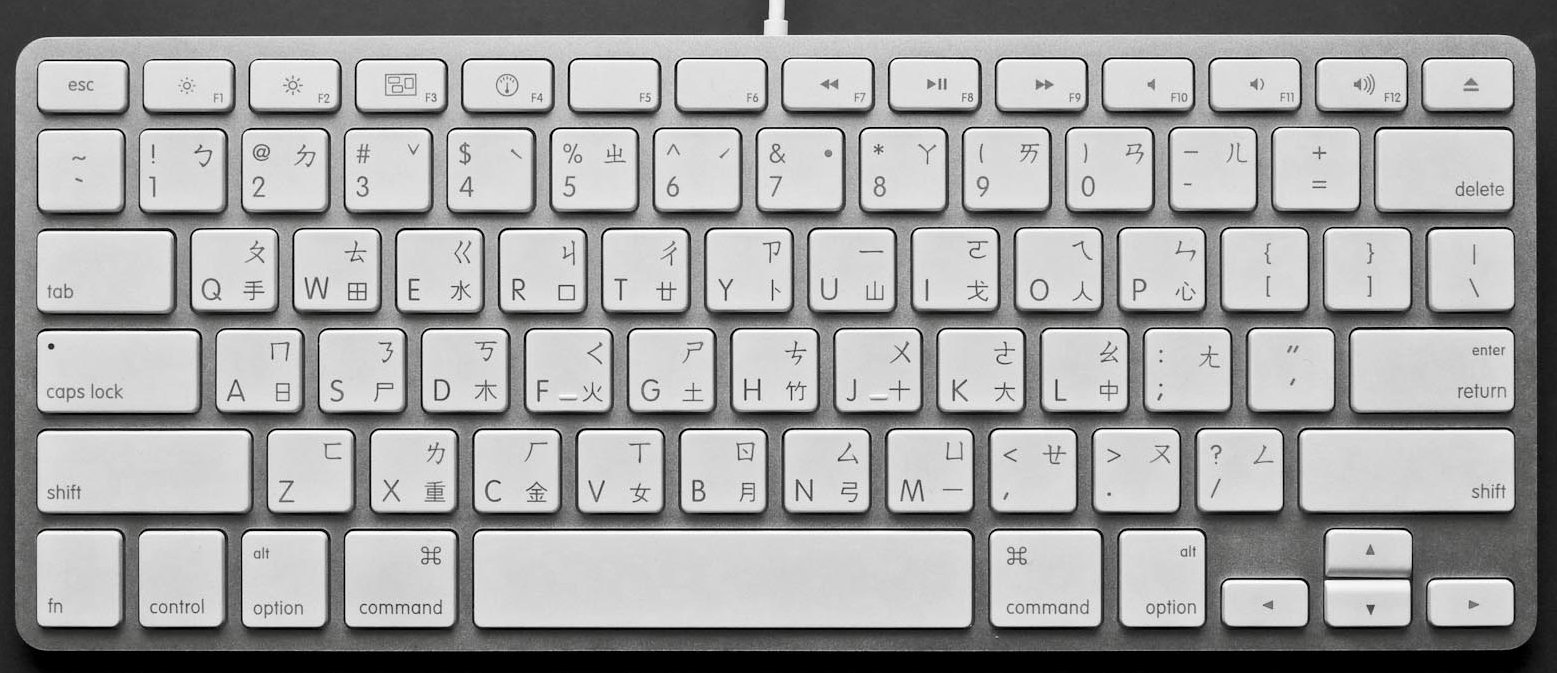
The key labels show 2 different input methods for Chinese. The labels on the upper right of each key is the Chinese phonetic alphabet Zhuyin (aka bopomofo). The lower right of each key is label for Chinese input method called Cangjie (倉頡).
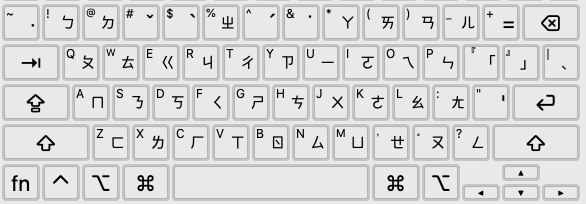
zhuyin symbols: ㄅㄆㄇㄈ ㄉㄊㄋㄌ ㄍㄎㄏ ㄐㄑㄒ ㄓㄔㄕㄖ ㄗㄘㄙ ㄚㄛㄜㄝ ㄞㄟㄠㄡ ㄢㄣㄤㄥ ㄦ ㄧㄨㄩ
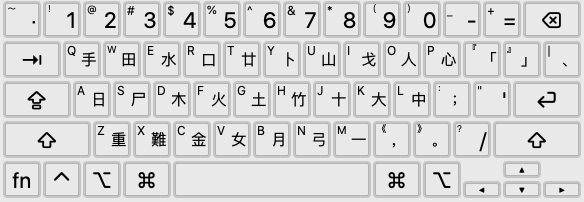
Chinese has thousands of characters. You need to know 3 thousands of them to read newspaper.
Chinese Input Methods
To type Chinese, you need to use what's called “input method”.
There are more than ten input methods for Chinese, invented at different times by different people in China and Taiwan.
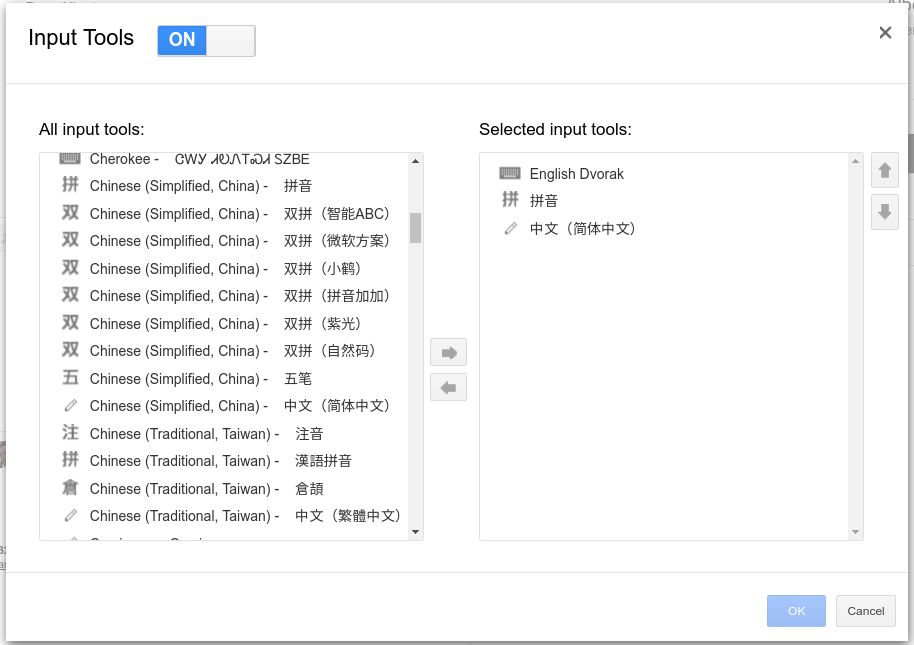
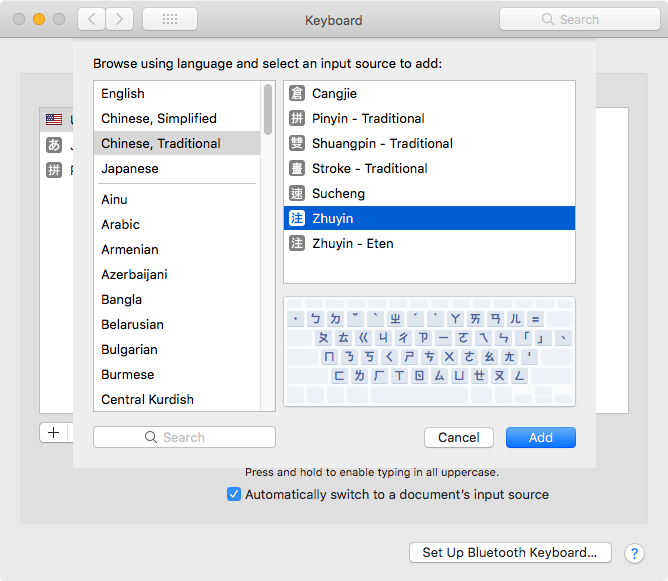
Chinese input methods can be roughly devided into 2 categories.
- Sound based (i.e. phonetics/pronunciation/reading). You need to know how a character is pronounced, before you can type it.
- Shape based (based on character's shape/stroke). You need to know how a character is written, before you can type it.
Sound based methods are used by most Chinese, probably greater than 95% of all Chinese speakers, because it's a system anyone who speak standard Chinese can learn in a day.
For each character, there are usually more than 10 homonyms (different characters with the same sound), so sound based system pop up a selection to let you pick the right character. This makes sound based system slow. (but input systems today have statistical data that lets you input the sound of several characters such as a word or a phrase, and the system can often correctly guess which word/phrase you want, so you don't have to manually chose each character.)
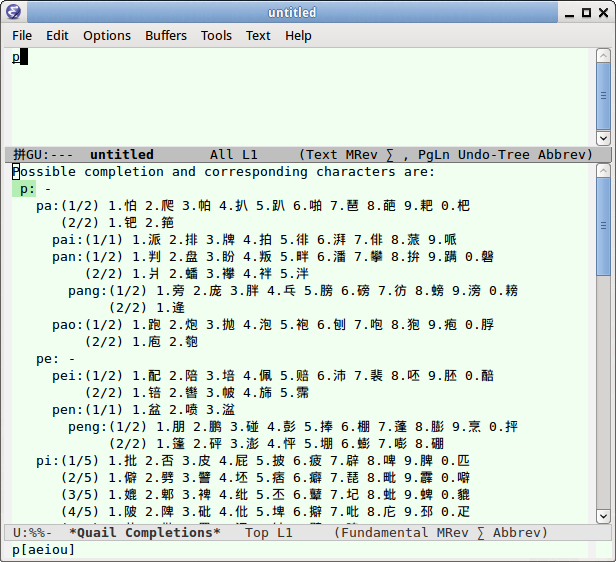
〔see Emacs Chinese Input〕
Character shape based methods require learning, but is in general faster and more precise, because you don't have the homonym problem.
(but as time goes by, sound based might actually be faster due to guessing at whole phrases with Artificial Intelligence tech, for inputting the type of text that's everyday speech. For poetry, academic writing, or any text that's not commonly used daily by average people, character based is much better.)
Sound Based Systems: Pinyin, Zhuyin
The most popular input methods are:
- Pinyin (拼音) → phonetics using English alphabet. Mostly used in China.
- Zhuyin (注音) (aka bopomofo) → phonetics using special symbols. Used in Taiwan.
Zhuyin is almost the same as pinyin, except that it uses special symbols instead of English alphabets. (e.g. here's first 4 zhuyin alphabets: ㄅ ㄆ ㄇ ㄈ, they correspond to pinyin's b p m f.) Any USA keyboard can also type zhuyin, but if the keys don't have zhuyin labels, you'll have to know which keys are what zhuyin characters.
For example, to type the character
我 (meaning “I, me”, pronounced “wo”)
in pinyin, you press w o.

in zhuyin, you press j for ㄨ and press i for ㄛ.
Character Based Systems: Wubi, Cangjie
in China, the second most popular Chinese input method is Wubi. Its a shape based system.
In Taiwan, the second most popular Chinese input method is Cangjie. Its a shape based system.
In Hong Kong, the most popular Chinese input method is Cangjie. (because Hong Kong people speaks Cantonese, they do not know standard Chinese pronunciation well, so they use shape based input.)
Both of wubi and cangjie require labels on the keys to learn it.
But in China, there is no keyboard with wubi labels, because most people using this method just memorized it. (keyboards in China are just USA keyboards without any special label on the keys.)
In Taiwan, most keyboards have dual labeling, of Zhuyin and Cangjie. Actually, most keyboards have another label for the Dayi system. So, a key usually has 4 labels: English, Zhuyin, Cangjie, Dayi.
The Most Popular Chinese Input Method
- pinyin → (sound based) used in China and around the world. Used by perhaps 90% of ALL Chinese speakers.
- zhuyin → (sound based) used mostly in Taiwan.
- wubi → (shape based) used mostly in China by some people.
- cangjie → (shape based) used mostly in Hong Kong, and by some people Taiwan.
Note: pinyin input method has lots variations, that use shortcuts and artificial intelligence to guess, to increase efficiency.
Turn on Chinese Input
Microsoft Windows, Mac, Google gmail, all support many Chinese input methods.
Just go to your system preference or control panel, usually in the “international” or “languages” section.
Chinese input
International Layouts
Western Layouts
- Idiocy of International Keyboard Layouts
- UK Keyboard Layout
- German Keyboard Layouts
- French Keyboard Layouts
- Spanish Keyboard Layouts
- Portuguese Ergonomic Keyboard Layout: pt-Nativo
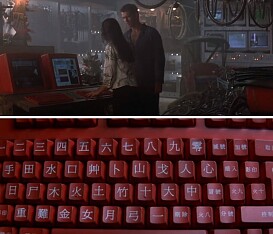 Chinese Keyboard in James Bond
Chinese Keyboard in James Bond